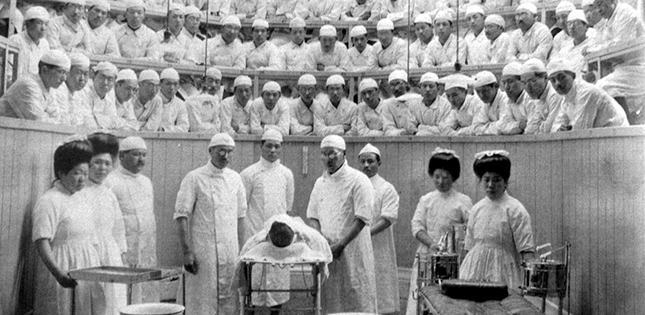The Tohoku University School of Medicine hit another milestone in its long glorious history by turning 100 in 2015. In the past century, the school has produced many famous clinicians and educators, whose ground breaking research has changed the practice of medicine not just in Japan but around the world.
The Tohoku University School of Medicine was known as the Medical School of the Tohoku Imperial University when it was founded in 1915. It was the fourth medical school founded within the network of Japan's Imperial Universities at the turn of the 20th century.
The Tohoku Imperial University was reorganized into the current Tohoku University in 1947 and the School of Medicine was established under the new system of education in 1951. The Graduate School of Medicine was established in 1955 and expanded to include Disability Sciences (1994), Health Sciences (2010) and the School of Public Health (2015).
As the university looks forward to the possibilities of the next 100 years, it's worth remembering and honoring some of the remarkable men who have led the School of Medicine to the top of its class.
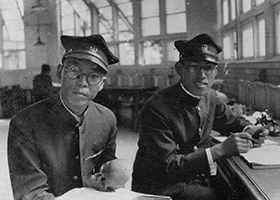 |
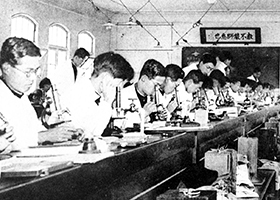 |
| Students studying in the anatomy room. 1926 | Studying pathology. 1937 |
Professor Gennosuke Fuse was the first Professor of the Department of Anatomy. He is most famous for his collaboration with Constantin von Monakow on "Mikroskopischer Atlas des Menschlichen Gehirn" or "Microscopic Atlas of Human Brain." He is also renowned for collecting the brains of over 200 species of mammals including dolphins, seals and Japanese wolves.
He worked long hours and had a reputation for being strict and demanding. But he was also thoughtful, as seen by his contribution towards the construction of the Showa-sha dormitory for medical students.
Professor Koichi Motokawa was the second Professor of the 2nd Department of Physiology, the 12th president of Tohoku University and a major player in the development of the first electroencephalograph in Japan. But he is perhaps still best known by his nickname "The Dynamite President" due to an explosive incident at his laboratory.
A mental patient, convinced that hazardous radio waves from the university were harming his brain, left a bundle of dynamite sticks in Professor Motokawa's lab. Fortunately, the bomb was found in time and thrown out the window onto the courtyard below where it exploded. No one was killed but more than 500 windows from surrounding buildings were broken by the blast.
Professor Motokawa was proficient in drawing and calligraphy, and enjoyed discussing art with his students, often speculating on their personalities based on their choices.
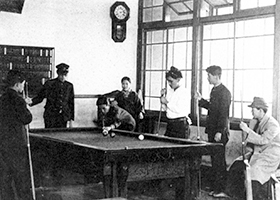 |
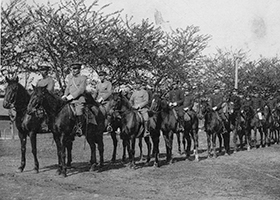 |
| Students playing billiard. 1937 | Horse riding practice. 1919 |
Professor Nakao Ishida was the third Professor of the Department of Bacteriology and the 15th president. He and his colleagues discovered the Sendai virus, which is used as a virus vector and for cell fusion. This was a major milestone in the research of viruses at Tohoku University. He found an anti-cancer antibiotic from the soil in Sendai and obtained its patent. He then established the Sendai Institute of Microbiology with the royalties earned.
Professor Ishida was considered a broad-minded person and was often described in myriad ways, from "quick, energetic and strict," to "friendly, helpful and a lot of fun." He was said to have a poetic soul and was known to be kind and compassionate, especially towards his students.
Professor Jiro Suzuki was the first Professor of the Department of Neurosurgery. He is most often associated with the Moyamoya disease, which he named. In the disease, certain arteries in the brain are impaired and a collateral circulation develops small and weak blood vessels. These blood vessels appear like a puff of smoke (expressed as moyamoya in Japanese) on the conventional X-ray angiography.
Professor Suzuki was a veteran of the Japanese Navy and managed his laboratory in a military manner. All laboratory members took part in navy-style exercises every Wednesday morning. He left a legacy of "Eight Medical Commandments" such as "The human brain is wider than an ocean."
Professor Morio Kasai was the third Professor of the 2nd Department of Surgery. He established the Kasai procedure for congenital biliary atresia. In the procedure, the blocked bile duct and gallbladder are removed and the small intestine is connected with the liver directly to drain bile. He saved many newborn babies with this procedure.
As one of the pioneering pediatric surgeons in Japan, he made great contributions in the areas of neonatal surgery, pediatric surgical nutrition and pediatric surgical oncology.
Professor Kasai was also an experienced alpinist. He successfully led a Tohoku University mountaineering party to the summit of the Nyenchen Tanglha Mountains (7,162 m) in the Tibetan Plateau in 1986.
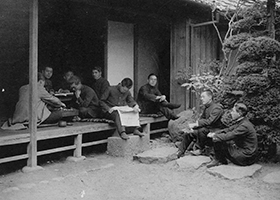 |
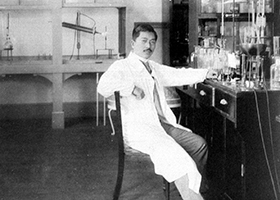 |
| Students convene in the Common Room. 1919 | Prof. Shotaro Yamakama' s lab at the School of Medicine. 1913 |
For enquiries about this article:
Tohoku University International PR SectionTel: +81-22-217-4816
Fax: +81-22-217-4818
Email: public_relations
 grp.tohoku.ac.jp
grp.tohoku.ac.jp
